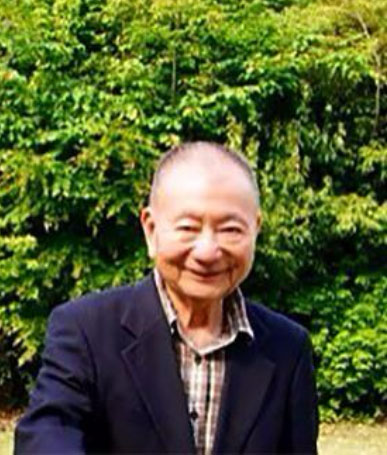Dr. AKIRA MIYAWAKI
ABOUT HIM
Dr. AKIRA MIYAWAKI

Dr Akira Miyawaki is a Japanese botanist and expert in plant ecology, specializing in seeds and the study of natural forests. He is active worldwide as a specialist in the restoration of natural vegetation on degraded land. Seedlings with extensive root systems are randomly planted in densely mixed species that match natural forest systems. The trees reach four meters after five years, eight meters after ten years, and over 20 meters after 25 years. Weeding and other human support for tree growth are required only for the first three years after planting. The result is a diversified forest that is allowed to grow naturally after three years. According to Dr Miyawaki’s theory of forest regeneration, the best forest management technique is no management at all.
THE MIYAWAKI METHOD
ABOUT MIYAWAKI
THE MIYAWAKI METHOD

The Miyawaki Method is a unique concept Potential Natural Vegetation proven to workd worldwide, irrespective of soil and climatic conditions. More than 3,000 forests have been successfully created worldwide using this method. He has planted around 40 million trees all over the world, and in 2006 he won the Blue Planet Prize, equivalent to the Nobel Prize in the environmental field.
The main features of the Miyawaki Method are:-
1. Upto thirty times more dense compared to conventional plantations.
2. At least 50-100 different native species are planted in the same area.
3. 30 times better noise and dust reduction.
4. Upto 30 times better Carbon-dioxide absorption as compared to a monoculture plantation.
5. Guaranteed growth of atleast 1 meter every year.
6. A completely maintenance-free, wild and native forest after the first three years.
7. A completely chemical fertiliser free forest that sustains itself and supports local bio-diversity.
THE PROCESS
THE WORKING


The Miyawaki Method works in these six steps:-
1. First, start with soil. To identify what nutrition the soil lacks.
2. Identify what species should be growing in this soil, depending on climate.
3. Then identify locally abundant biomass available in that region to give the soil whatever nourishment it needs. This is typically an agricultural or industrial byproduct, but it can be almost anything, it must come from within 50 kilometers of the site, which means we have to be flexible.
4. Once the soil is amended to a depth of one meter, plant saplings that are up to 80 centimeters high, packing them in very densely, three to five saplings per square meter.
5. The forest itself must cover a 100-square-meter minimum area. This grows into a forest so dense that after eight months, sunlight can’t reach the ground. At this point,every drop of rain that falls is conserved, and every leaf that falls is converted into humus. The more the forest grows, the more it generates nutrients for itself, accelerating further growth. This density also means that individual trees begin competing for sunlight, another reason these forests grow so fast.
6. The forest needs to be watered and weeded for the first two or three years, at which point it becomes self-sustaining. After that, it’s best to disturb the forest as little as possible to allow its eco system, including animals, to become established.